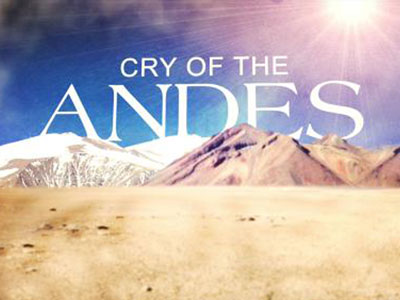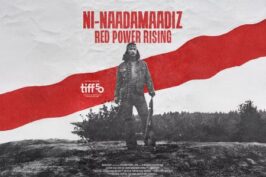Synopsis: From its opening on the streets of Toronto, CRY OF THE ANDES takes you south to Chile’s Huasco Valley for a character driven story about greed and social justice – a cautionary tale about the environment that resonates in multiple industries around the world. In this modern day gold rush, we see how big business, money and power are the world order, where corporations can influence governments, manipulate communities, and disregard human rights. As this wave of globalization crashes down on the Huasco Valley we come to realize that the legacy of Pascua Lama won’t be measured by what is gained – but what is lost.
This feature-length documentary by Canadian filmmakers Carmen Henríquez and Denis Paquette premiered in Toronto at the Planet in Focus Film Festival this past Saturday. The film highlights the issue that social values are too often overlooked in favour of corporate ones. We also learn how the locals of the Huasco Valley – the Diaguita Huascoaltinos – are dealing with the possibility of losing their land and most importantly, access to water — a natural resource that has become too valuable for mining corporations such as Barrick Gold. Through the film, we come to know how members of the Diaguita Huascoaltino community along with other local activists are opposing the Pascua Lama mining project. What is unfortunate to see is that many folks are in favour of Barrick Gold and its plans to use water from the area to sustain its mining efforts; all the while charging the locals for the same water they’ve accessed for centuries. As one of the priests in the film states, “..some souls have a price.” This is not an isolated story.
Directors Henríquez and Paquette force us to think about the constant struggle between globalization and its impact on existing rural societies. This is a look at how such “efforts” are sometimes misconstrued and many affected are often uninformed. For a better understanding of Cry of the Andes and the hopes for this film, here are some answers Paquette was able to share with me after its premiere this past weekend.
HM: Since its premiere at the Vancouver Latin American Film Festival and at Planet in Focus (Toronto), what have you felt from your own observations to have been the reception for this film?
The rescue of the miners in Copiapo has predictably focused the spot light on mining in Chile so interest in our documentary has been strong. Also, the film seems to resonate best with a Latin American audience, many of whose countries share the same story regarding the resource base and conquest of foreign corporations.
HM: Can you speak a little as to what has happened since you completed filming… what has happened to the Pascua Lama project and those who oppose it; is there any light at the end of this potential environmental disaster?
Wish we could offer something more positive here but each week seems to bring Pascua Lama closer to reality. However, opposition in the Huasco Valley and in Chile continues. A labour strike occurred this past January over wages and poor working conditions for the workers doing development at the mine site which has since been resolved. OLCA states the mine has been operational since November last year in Chile and since April 2010 this year in Argentina, however it is not official, and the people of the Huasco still have hope the project will not go ahead.
HM: How can this film influence change and add to the the understanding of the struggle against corporations such as Barrick Gold? Do you think the people involved seek a dialogue with this company or want them out of the area altogether?
The Huascoaltinos have made it clear they don’t want further dialogue with the company and their only interest is the departure of Barrick which of course appears unlikely at this point. Our intent through this documentary is to motivate discussion and debate over the rampant subjugation of social values in favour of corporate interests, especially in parts of the world where these projects take place away from the eyes of the shareholders. Many of the opponents of the project who appear in the documentary are not anti-mining per say, more so about the size and scope of PL and the choice it forces between water or gold – mining or farming.
HM: What is the plan trajectory for this film… after Vancouver and Toronto, where will it go next?
The film was only released 3 weeks ago so we are still considering our distribution strategy. However, we are focusing on festival markets throughout Latin America and other Spanish speaking markets/festivals since feedback to date has been strongest there. One of our primary goal is to get Cry of The Andes shown at FIDOCS, the Patricio Guzman festival in Chile next Spring, however since films critical of government policy/direction tend to get thrown under the bus we are curious to see if we will get in.






